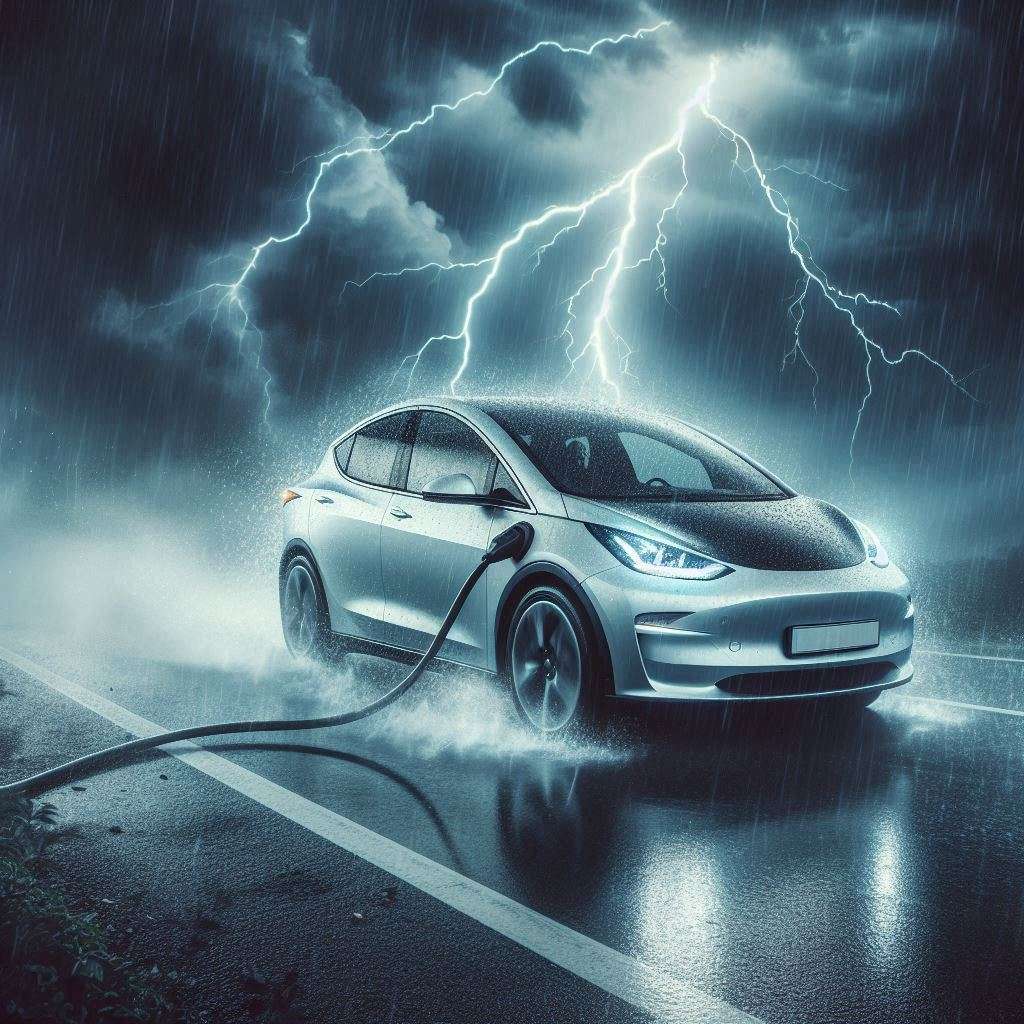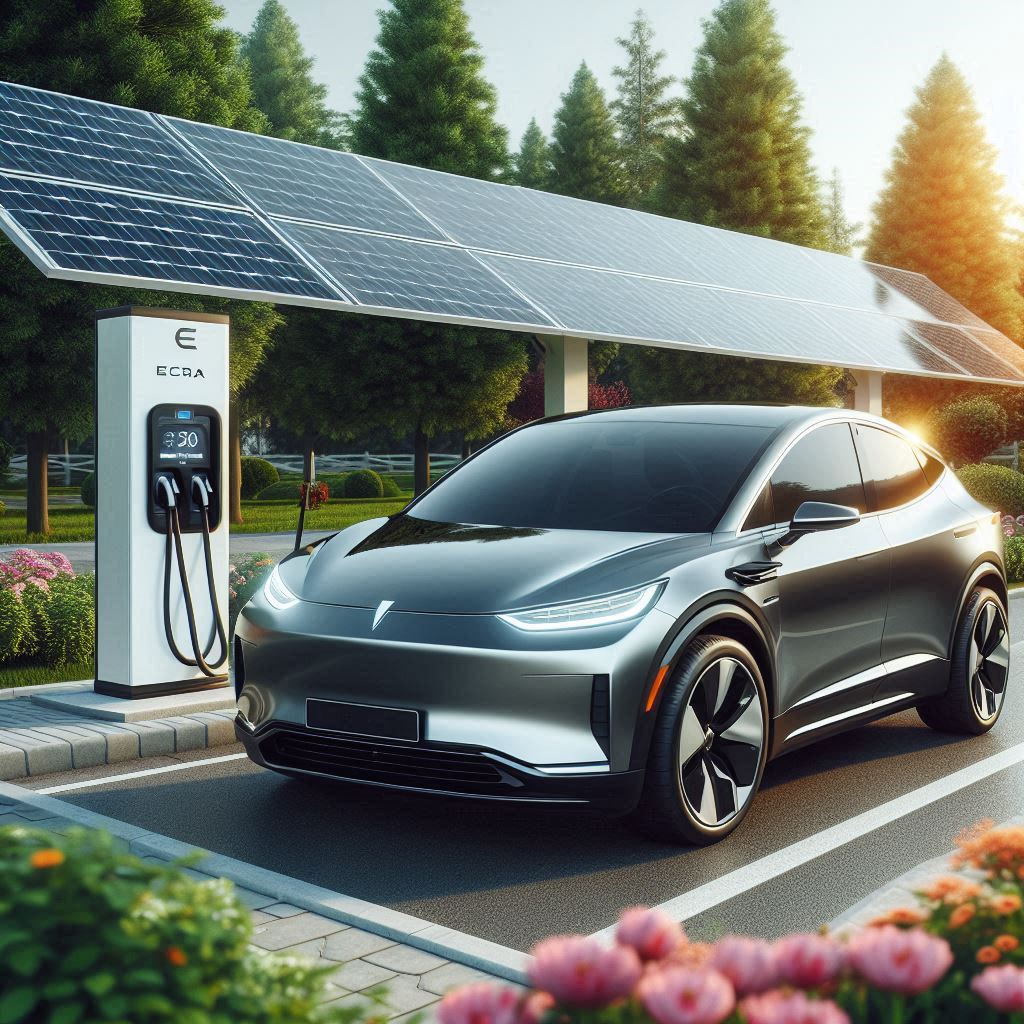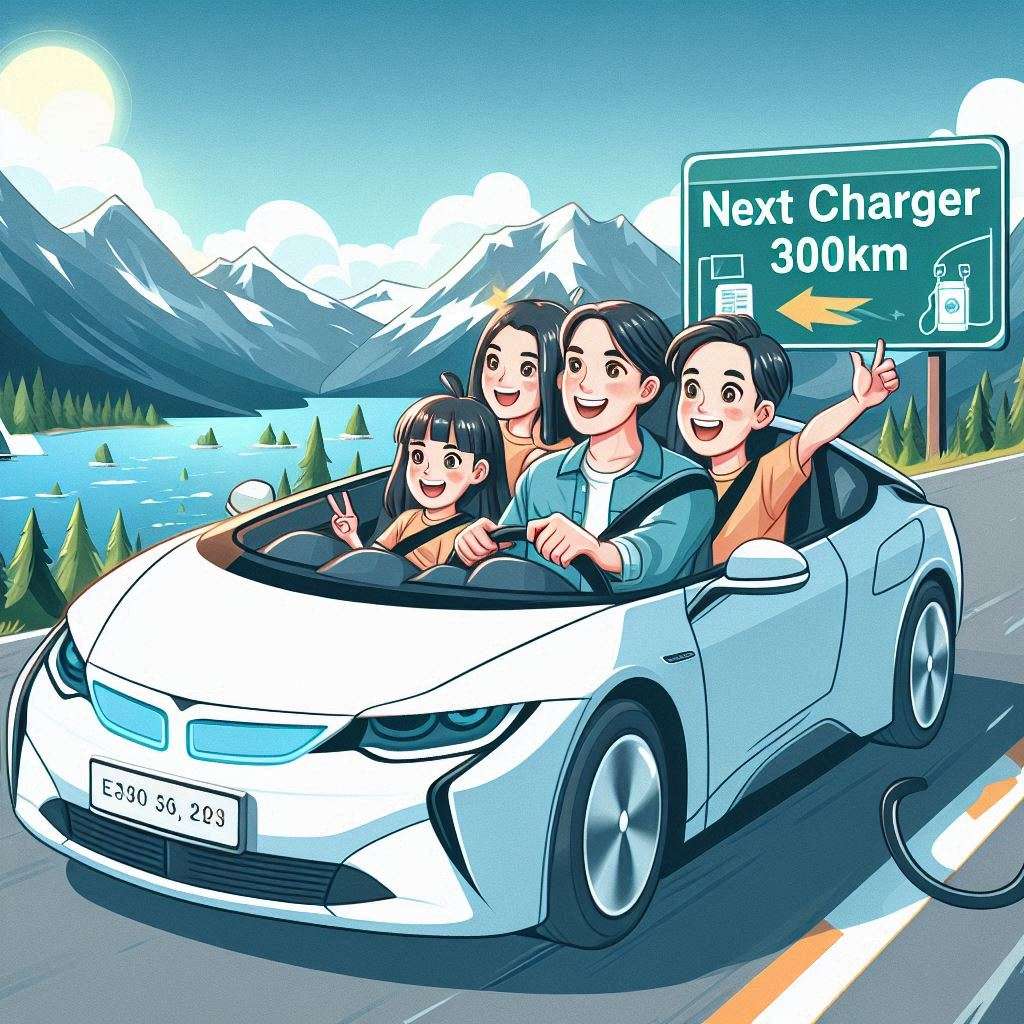The Myth: EVs are more dangerous in thunderstorms
Are electric cars safe in lightning? Are they more dangerous than petrol or diesel cars?
You may have heard that EVs catch fire easily, so people have extended the myth to include extra danger from lightning. Let’s find out if electric cars are safe in lightning and storms.
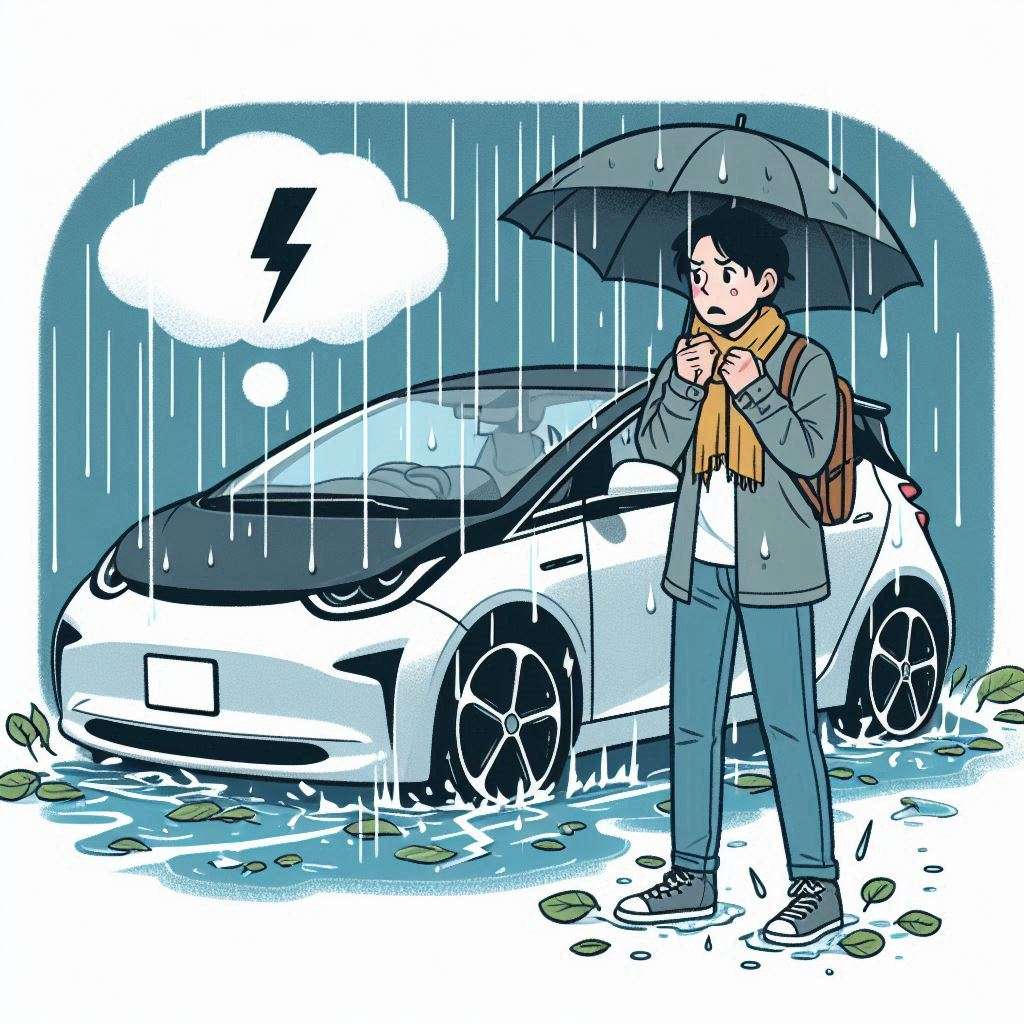
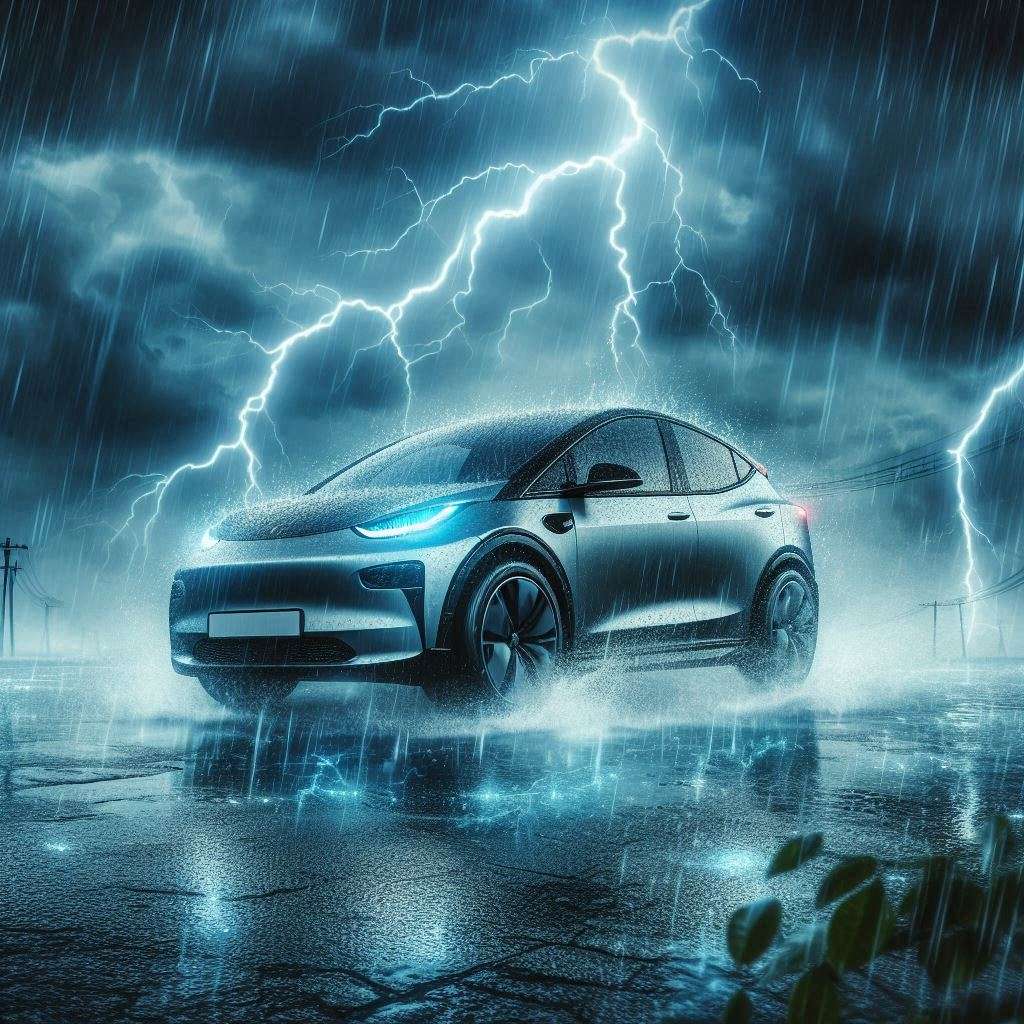
The Myth Busted:
Cars are inherently fairly unlikely to be hit by lightning. Lightning looks for the easist path to ground, so it looks for metal objects that are connected to the ground. This is why lightning rods work. Cars are made of metal, so they should be good conductors, right? Wrong!! The rubber tyres form an insulating barrier which means cars don’t make good lightning rods.
Electric cars are no different, with the insulation provided by the rubber tyres. Even when wet, rubber tyres are poor conductors of electricity, as the thin layer of water isn’t enought to form a good conduction path to the ground.
What about those big batteries in EVs? Well they’re pretty well insulated, for obvious reasons. We don’t want 800V or 400V electricity loose in the car, so the insulation around batteries and the electrical systems is robust. On the off chance that a car is struck by lightning it’s unlikely to cause any significant damage to the electrical system or the occupants of the vehicle.
Myth Busted in Detail
If you’re worried about getting stuck in an electrical storm while driving an EV, then you’re not alone! Are electric cars safe in lightning? With the recent wild weather around the world, it’s natural to wonder what happens if an electric car gets hit by lightning. The good news is that EVs handle a lightning strike just like internal combustion engine cars, and with some basic precautions, you can stay safe on the road. Let’s probe what you need to know to drive confidently in stormy weather
So, are Electric Cars Safe in Lightning?
The question of electric car safety in lightning storms is a pressing one, especially for those who live in areas prone to wild weather. As electric vehicles (EVs) become increasingly popular, it’s natural to wonder what happens if an EV gets hit by lightning. The good news is that lightning strikes are relatively rare, and the chances of your car being hit are low. However, if it does happen, the outcome is similar to that of an internal combustion engine (ICE) car. The lightning will likely cause cosmetic damage and may affect the wiring, but the car itself will likely be okay. If struck by lightning, it’s best to get any car checked out by a mechanic. The computer, and wiring might be affected, and it’s best to find out quickly for both safety and so you can make an insurance claim if necessary.
Is it safe to drive an electric car in a thunderstorm?
An electric vehicle handles a lightning strike in much the same way as an ICE car. Remember that electricity is constantly trying to ground itself, and your EV’s contact with the ground is through four rubber tires, meaning the electricity from lightning has nowhere to go.
Understanding how EVs handle lightning strikes is crucial for driver safety. The metal shell of the car provides a safe barrier between you and the lightning, and the electricity will want to travel through the car’s metal exterior rather than the interior materials like leather, plastic, or cloth.
Why are cars safe in lightning?
Often the safest place to be in a storm is inside the car (unles you can get indoors of course). You’re protected from the elements, including rain, snow and as we’ve already established, lightning. If there’s any chance of deep snow or minor flooding, then I’d rather be in an EV than an ICE. EVs don’t have an exhaust and this provides two advantages: 1) the engine won’t stall because the exhaust is submerged and 2) you won’t die of carbon monoxide poisoning if snowed in. You can keep the heat on for days if you become trapped without fear of running out of fuel or gassing yourself.
The Risks of Standing Outside the Car
If you’re caught outside during a lightning storm while standing near your electric car, you’re at a higher risk of being injured or worse. It makes no difference if the car is electric, petrol, diesel or some weird alien technology we haven’t heard of yet.
Why You Shouldn’t Touch the Car During a Lightning Storm
Tapping on the car’s metal body or holding onto it during a lightning strike can be disastrous. You become the path of least resistance for the electricity to ground itself, which can lead to serious harm or even death. You are a much better conductor of electricity than your car’s tyres, so the electricity is going to choose you as the path of least resistance.
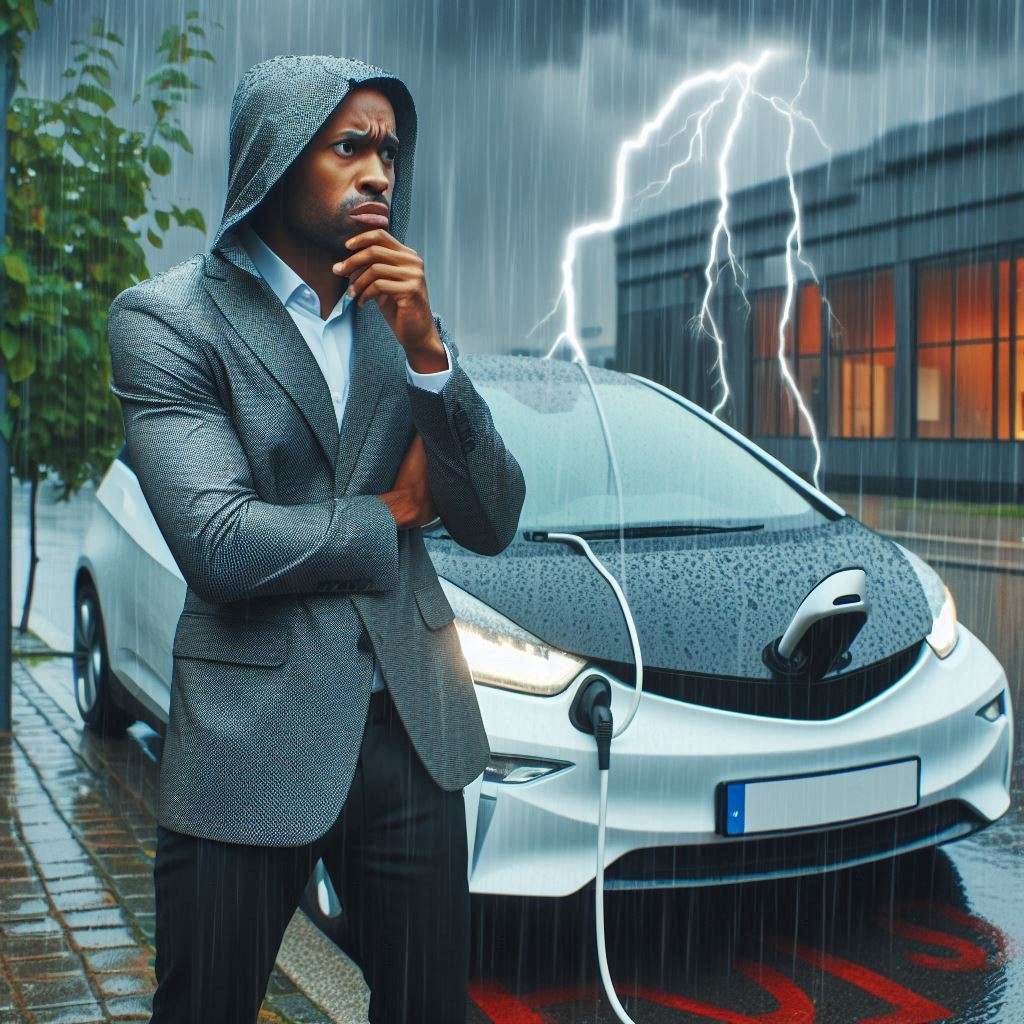
Charging Your Electric Car in a Storm
Even when the skies are dark and the thunder is loud, you don’t need to worry about charging your electric car in a storm. However, it’s necessary to exercise caution while plugging and unplugging your car.
Is it Safe to Charge Your EV in a Storm?
Any concerns about charging your EV in a storm are largely unfounded. While it’s true that lightning can cause damage to your car’s electrical system, the chances of this happening are extremely low. In fact, the connectors are designed to handle rain and wet conditions, and the charging process itself is designed with safety checks to prevent any issues.
If there’s lightning in the immediate vicinity and you’ve started charging, probably best to leave the cable in. If you haven’t plugged in yet, then maybe wait a few minutes until the lightning has passed over. The EV charger has a bit of an advantage over most petrol pumps here. With a petrol pump, you need to stand there holding the pump. At least with an EV, you can plug in and either get in the car, or go to the cafe.
How Charging Connectors Are Designed to Handle Rain
With modern charging connectors, you don’t need to worry about water getting in while charging. They’re designed to let minimal water in, and the charging process is more like slowly turning a tap on rather than an instant flow of electricity.
Another important feature of charging connectors is that they’re designed with safety checks in place. When you plug your car into a charger, it performs a series of checks before power flows, including checking for current faults and ensuring it’s safe to charge. This means that even if there’s a fault in the wiring or communications, the charger won’t start charging your car.
Safety Precautions When Charging
Once again, when it comes to charging your electric car, safety should be your top priority. While charging in a storm may not be inherently unsafe, there are some precautions you should take to ensure your safety.
Exercise Caution When Charging in Wet Weather
For your own safety, exercise caution when charging your EV in wet weather, especially during electrical storms. Fire and Rescue NSW advises to always exercise caution when charging in wet weather, so don’t rush out to unplug your car when you see lightning outside! You’re much better off waiting for the storm to pass and allowing the car to charge normally. If you feel better, use an app to turn the charger off but other than making you feel better, it will have no effect.
The Importance of Inspecting Cables for Damage
Safety checks are crucial when charging your EV, especially in wet weather. Some people will tel you to “inspect” the cables for any damage or nicks before plugging them in. I’ll go so far as to say don’t use them if there’s obvious damage, but standing in a storm to “inspect a cable” sounds a bit nuts to me. If there’s no local lightning, then I’d just plug in and get back in the car to keep dry. If there’s any chance of lightning strikes, then I’d give it a miss for a little while.
Exercise caution when plugging into a DC charger regardless of the weather. Check the cabling for any exposed wires, as this can be dangerous. Be mindful of, electrical equipment requires careful handling, so take your time and ensure everything is in order before charging your EV.
The Role of Safety Checks in Charging
After understanding how electric cars respond to lightning strikes, it’s necessary to discuss the safety features built into the charging process. This is particularly crucial when charging your EV in wet weather or during electrical storms.
The Safety Features of DC Charging
The high-powered DC charging method is designed to rapidly replenish your EV’s battery. When you plug your car into a DC charger, it doesn’t immediately start flowing power to the vehicle. Instead, it performs a series of safety checks before initiating the charging process.
The system is designed to detect any potential faults or hazards before charging begins. The charger communicates with your EV to determine its maximum charge rate and ensure it’s safe to charge.
The charger will check for any current faults in the wiring or communication systems. If it detects an issue, it will prevent the charging process from starting. This built-in safety feature helps prevent any potential electrical shocks or fires.
Expert Insights on Electric Car Safety
To better understand the safety of EVs in lightning storms, we turn to Tim Washington, CEO of Jet Charge, a leading provider of electric vehicle charging solutions. Tim recently shared his insights on the safety of EVs in lightning storms.
Thoughts on Electric Car Safety in Lightning Storms
Charge your worries away! According to Tim Washington, EVs are just as safe as internal combustion engine (ICE) cars when it comes to lightning strikes. “The electricity from lightning has nowhere to go,” he explains, “as your EV’s contact with the ground is through four rubber tires.”
The real concern, as Tim notes, is when you’re standing outside and touching the car. In that case, you become the grounding point for the lightning, which can be dangerous. However, if you’re inside the car, the metal shell will protect you from the electricity. Additionally, the car’s safety features, such as breakers and fuses, are designed to trip or blow in the event of a lightning strike, ensuring your safety.
Final Words
Considering all points, you can rest easy knowing that electric cars are safe in lightning storms. While it’s vital to exercise caution when charging your EV in wet weather, the chances of your car being damaged by a lightning strike are minimal. Remember to inspect your vehicle for damage after a lightning strike and contact a technician or roadside assistance if you’re unsure about its safety. With the right precautions, you can drive your EV with confidence, even on stormy days. So when we ask: Are electric cars safe in lightning? The answer is Yes! As long as we take the normal sensible precautions for being out in a storm.

